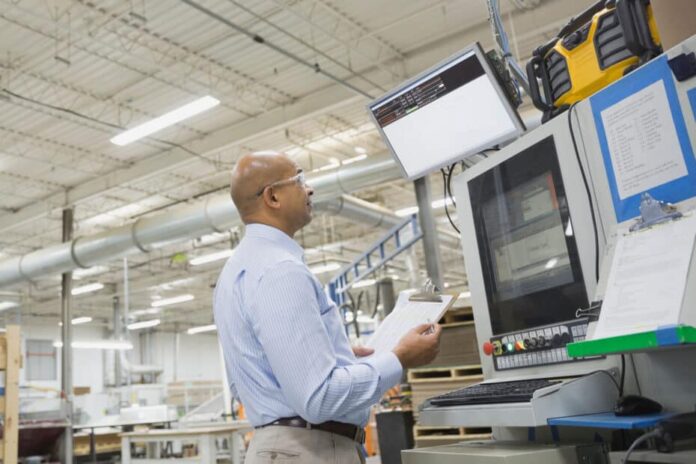An industrial power supply is a device that provides power to various industrial equipment and machines. These power supplies are designed to be robust and durable, able to operate in harsh environments, and withstand the rigors of heavy use.
The basic principle of operation for an industrial power supply is to convert the incoming AC power from the main power grid into the DC power needed by the equipment or machines. The rectification process helps to achieve this, which involves converting the AC power into pulsating DC power.
This process typically involves a diode bridge, which is a collection of diodes arranged in a specific configuration to allow the AC power to flow in one direction only. The output of the diode bridge is then filtered to smooth out the pulsations and provide a stable DC voltage.
The filtered DC voltage is then regulated by the power supply to ensure that the output voltage remains within a certain range, even if the input voltage fluctuates. This is typically achieved using a feedback loop that monitors the output voltage and adjusts the power supply’s internal components as needed to maintain a steady output.
In addition to rectification, filtering, and regulation, some industrial power supplies also incorporate other features, such as overvoltage protection, overcurrent protection, and thermal protection. These features are designed to protect the equipment and the power supply itself from damage due to power surges, short circuits, or overheating.
Also Read About –Is Wearable Computing Technology the Future?
What are the Common Types of Power Supply?
There are three main types of power supply. Namely, unregulated, linear, and switching—they use several operating principles. However, in industrial applications- switching power supplies are commonly used and the others are obsolete.
Switching power supplies are famous because of their high efficiency and small size. Most widely used in DIN rail mounted. They switch input AC to a higher-frequency supply (to many kHz) through a rectifier and for AC outputs inverter electronics. Then they rapidly switch power between the onboard and load inductors and capacitors. Voltage conversion is through a transformer (As it offers high frequencies) which is quite compact.
Linear power supplies perform voltage regulation by using a transformer to convert input AC power to some voltage which is helpful for another machine or component. Then the supplies use filters and rectifiers for final AC-to-DC conversion and easy functioning- generally at some voltage that moderately exceeds the target output to prevent Undervoltage faults.
Advantages of Industrial Switching Power Supplies
Industrial switching power supplies offer several advantages over traditional linear power supplies, including:
- Higher Efficiency: Switching power supplies are much more efficient than linear power supplies, converting AC power to DC power with minimal energy loss. This makes them ideal for use in applications where power consumption is a critical consideration, such as in data centers, telecommunications equipment, and other high-power applications.
- Smaller Size and Lower Weight: Switching power supplies are typically smaller and lighter than linear power supplies, making them ideal for use in applications where space is at a premium, such as in portable electronic devices or tight enclosures.
- Greater Flexibility: They can operate at a wide range of input voltages and frequencies, making them ideal for use in applications where the input power is not stable or predictable, such as in mobile or remote equipment. They can also be designed to provide multiple output voltages and currents, making them adaptable to a wide range of applications.
- Higher Reliability: Switching power supplies are less prone to failure than linear power supplies, due to their simpler design and fewer components. They are also less susceptible to voltage fluctuations, which can cause damage to sensitive electronic equipment.
- Lower Cost: They are generally less expensive to manufacture than linear power supplies, due to their simpler design and lower component count. This makes them an attractive option for cost-sensitive applications, such as consumer electronics or low-end industrial equipment.
Conclusion
Overall, the goal of an industrial power supply is to provide a stable and reliable source of power for industrial equipment and machines, even in challenging environments. By converting the incoming AC power into the DC power required by the equipment, and regulating the output to ensure stability and consistency, these power supplies play a critical role in industrial automation and manufacturing processes.
Read More – How Can Electronic Signature Technology Benefit Your Business?





![Best Social Media Marketing Name Ideas to Attract [2024] Social Media Marketing Names in 2024](https://gonobuddy.com/wp-content/uploads/2024/03/Top-100-Creative-Social-Media-Marketing-Names-in-2024-218x150.jpeg)







